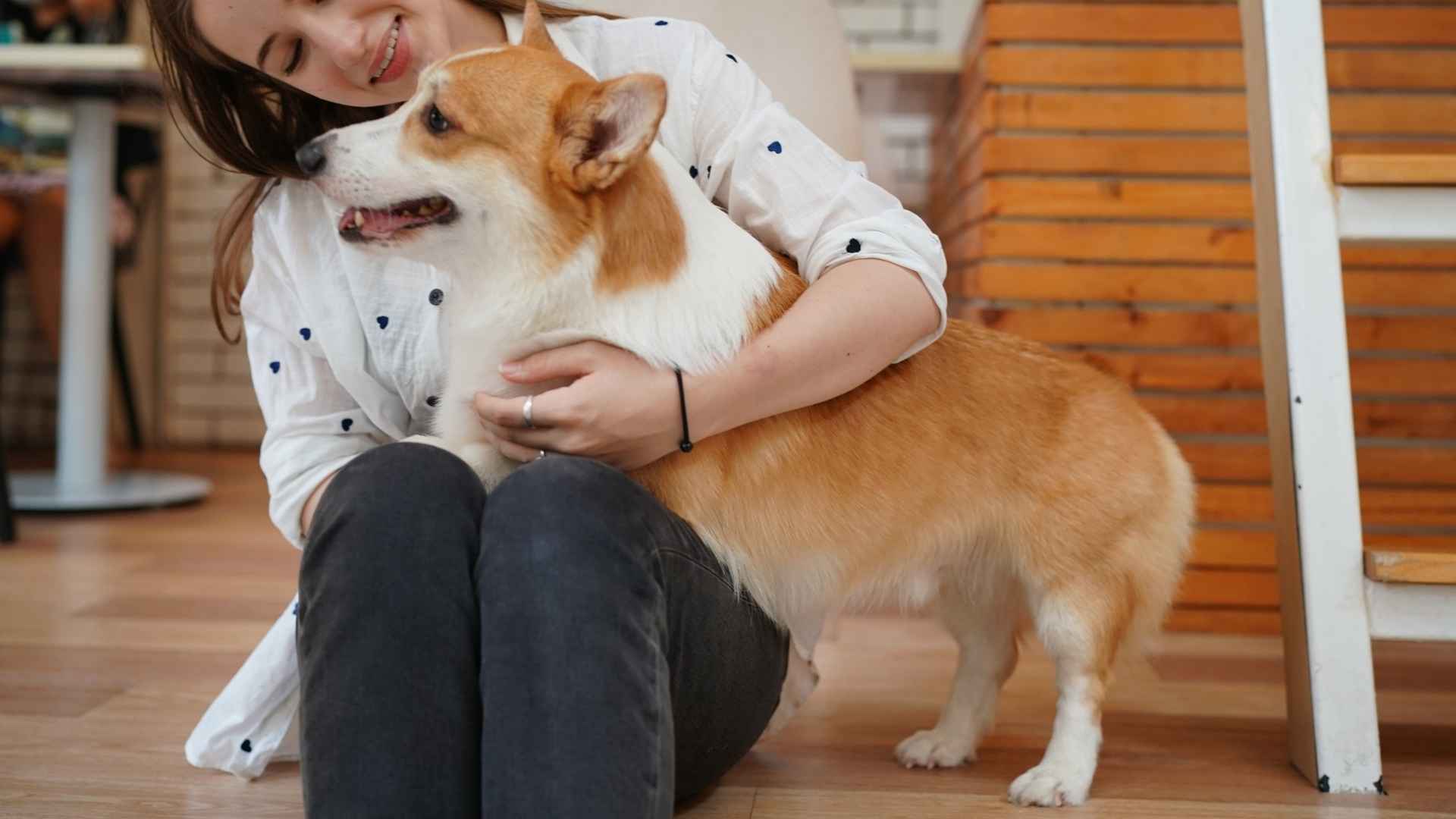Did you know that dogs can recognize their owners’ scent even after years of separation? That’s not just impressive—it’s the ultimate display of loyalty. For centuries, dogs have earned the title of “man’s best friend,” not just for their playful nature or protective instincts but for their unmatched devotion.
In a world that’s constantly changing, there’s something deeply comforting about a furry friend who stays by your side through it all—tail wagging, eyes full of love, and heart completely yours. Whether you’re having the best day or the worst, these dogs won’t judge; they won’t leave—they’ll simply be there.
If you’re searching for a companion who offers more than just company, one who truly connects, understands, and stays loyal no matter what, you’re in the right place. This blog dives into the most devoted companion dog breeds that are more than pets—they’re your forever best friends.
Loyal Companion Dog Breeds
1. Labrador Retriever
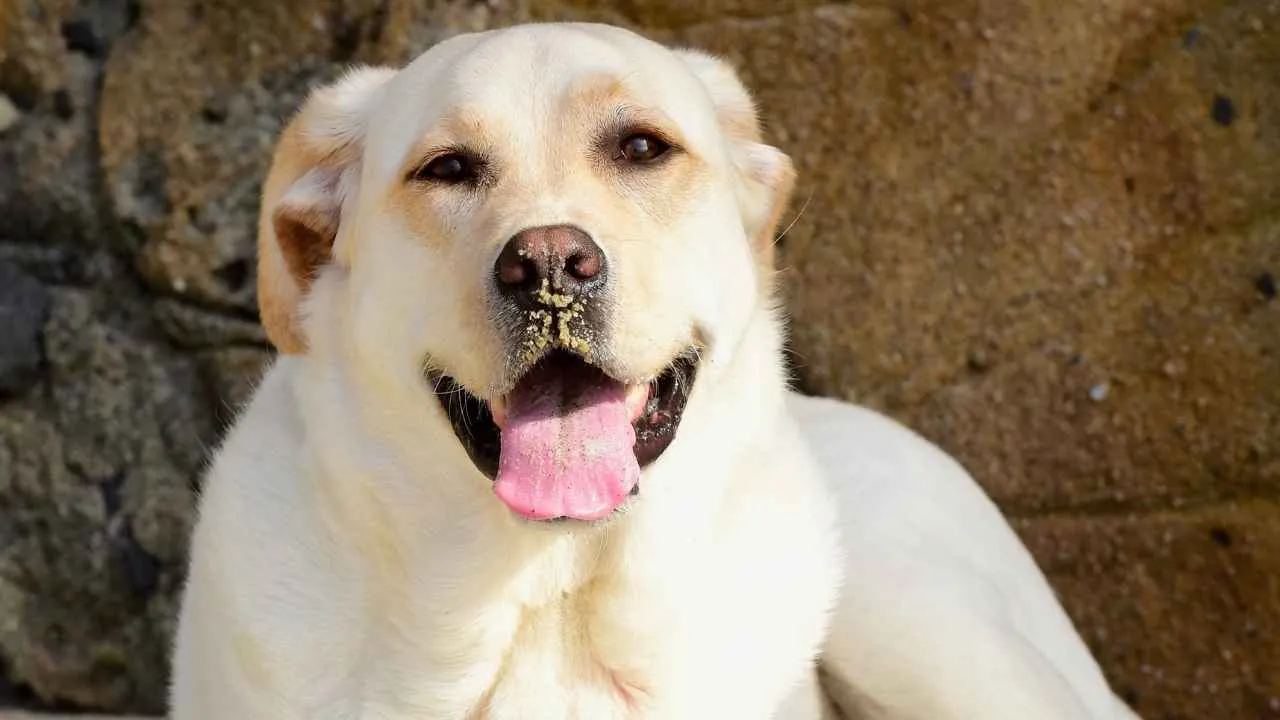
The Labrador Retriever originated in Newfoundland (not Labrador) and was brought to England in the 1800s. Initially used by fishermen, it became refined into a versatile sporting dog. Known for its otterlike tail, webbed feet, and dense coat, the Lab is built for water, excelling in swimming and field trials.
Labradors are celebrated for their gentle, loyal, and even-tempered nature. Not only do they make excellent family dogs, but they are also trained as guide dogs, therapy dogs, and for search-and-rescue missions.
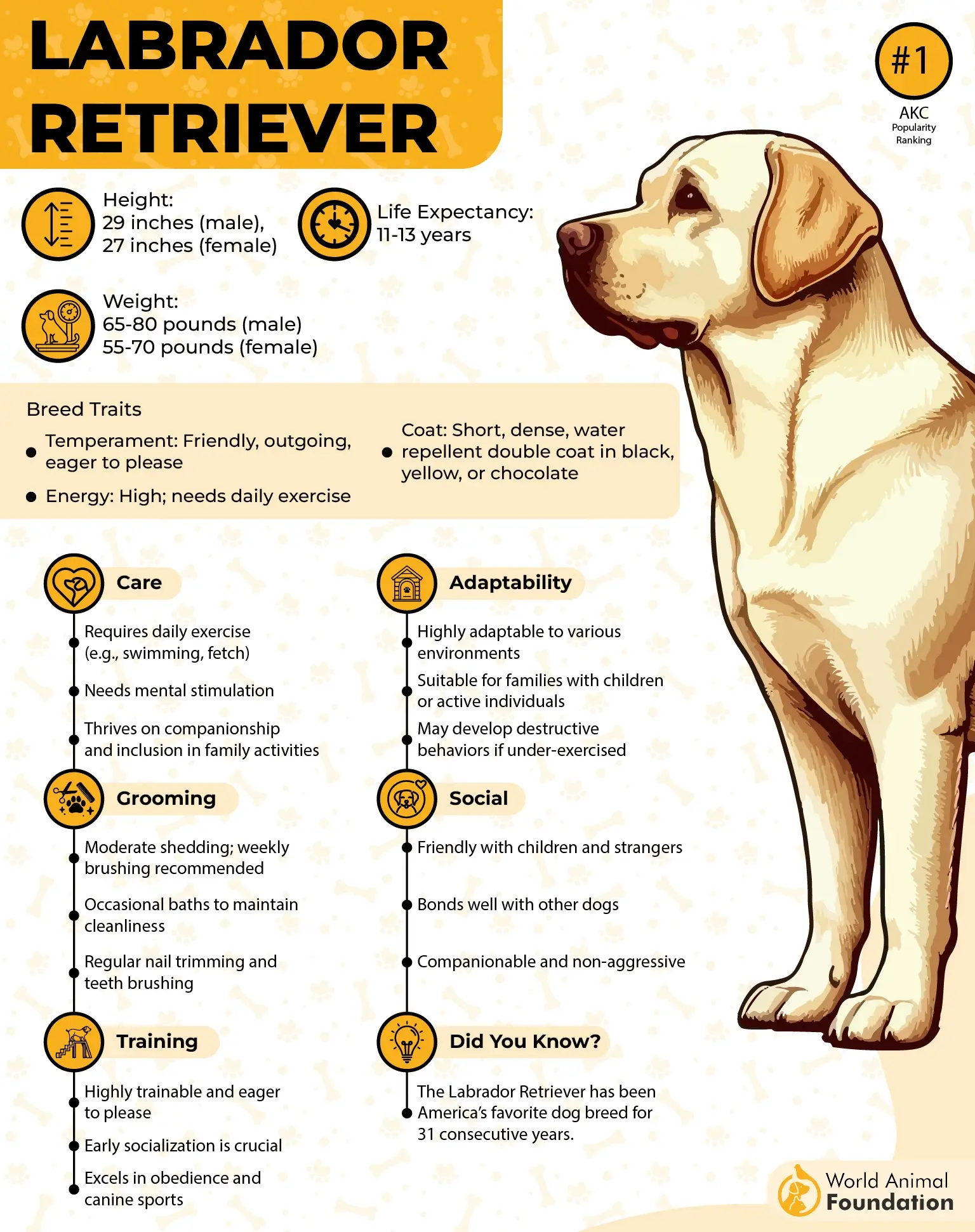
Labradors are extremely intelligent and eager to please, which makes training easy. However, their high energy requires consistent activity.
These dogs are friendly and get along well with children and other pets, but early socialization and supervision are important, especially with young children. Labs thrive on mental and physical challenges, including retrieving tasks, and can be strong-willed when young.

The breed has made headlines with remarkable stories like Endal, a Labrador who saved his owner’s life, earning the title of Dog of the Millennium. Labrador Retrievers have been the top American Kennel Club breed for over three decades, thanks to their versatility, affectionate temperament, and strong working heritage.
2. Newfoundland
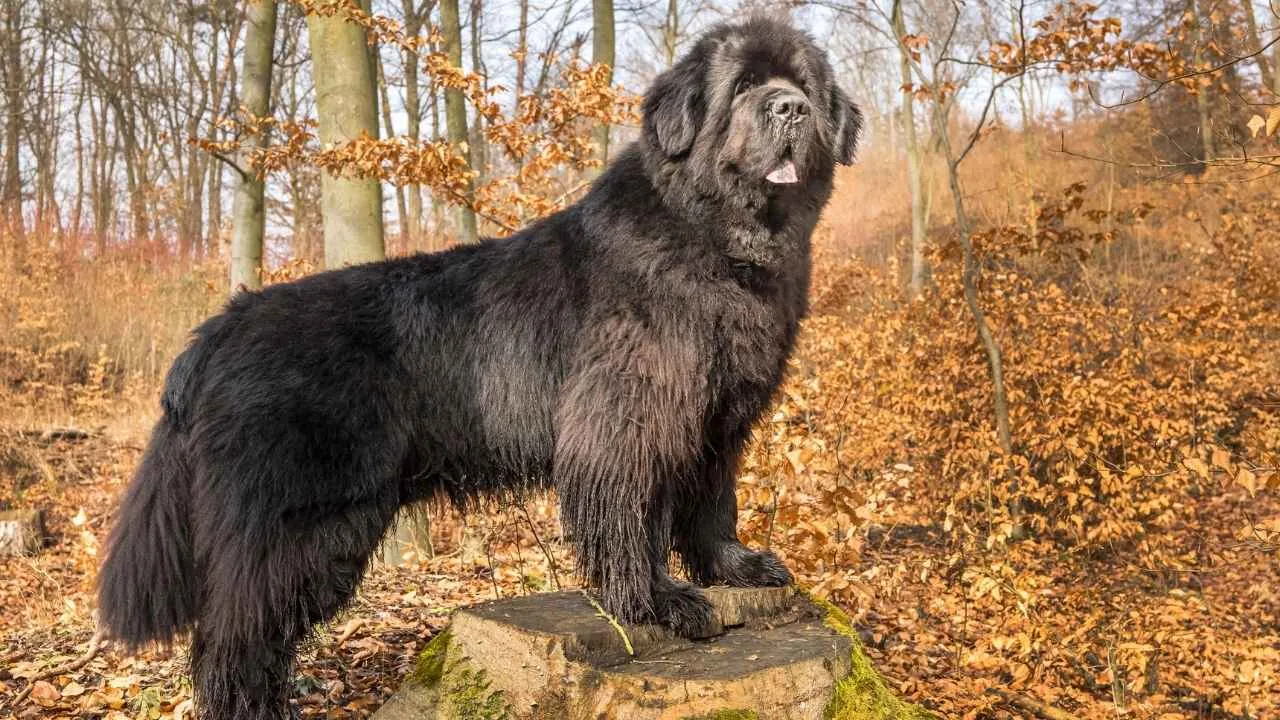
The Newfoundland dog is a large, fuzzy breed with a rich history, originally bred for working alongside fishermen in Canada. Known for their powerful build and loyalty, these dogs were invaluable companions, helping fishermen retrieve nets and even rescuing people struggling in the water.
Their strong swimming abilities made them perfect for water-related tasks, and their history as working dogs has earned them a reputation as gentle giants.
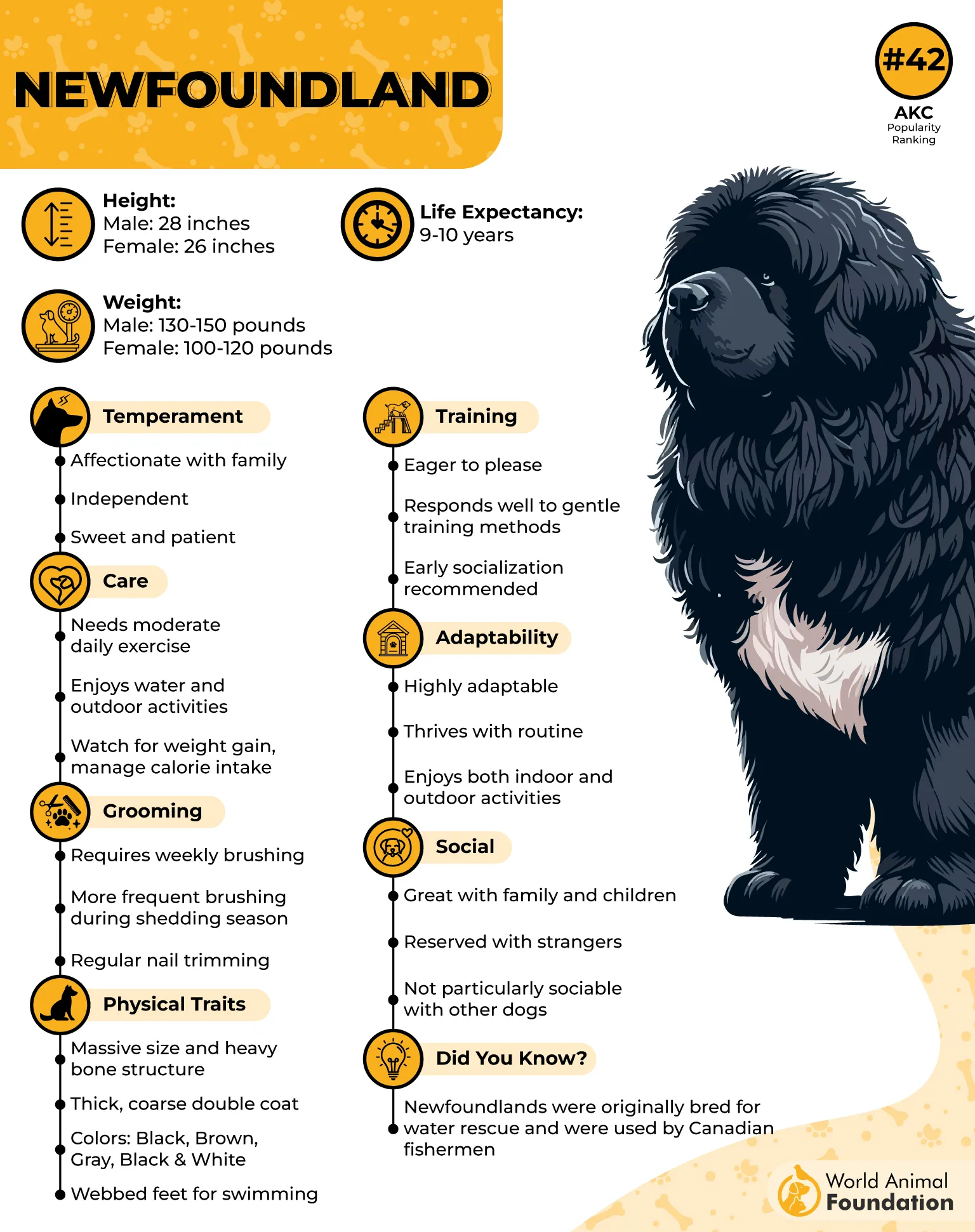
Newfoundlands are exceptional water rescue dogs, able to dive into almost any water, even icy waters, to help people in distress. Their powerful frames and swimming skills allow them to pull individuals to safety, making them one of the most effective breeds for water rescues.
Due to their working heritage in harsh climates, Newfoundlands have a strong appetite, needing food to fuel their bodies and keep them warm. While no longer required for laborious tasks, their love of food remains, and without proper control, they can become overweight, leading to health issues.
As noted by WebMD, these dogs are also known for their calm and affectionate temperament. They are gentle and loyal, making them excellent family pets. Newfoundlands love children and are often nicknamed “nanny dog”. They are rarely aggressive, often preferring to stay close to their owners, which makes them ideal companions in a home setting.
With their laid-back personality, Newfoundlands are also known for being non-aggressive, rarely barking or biting. They are devoted to their families and enjoy spending time with them, making them ideal for owners seeking a friendly, sweet-natured, and low-maintenance companion.
3. Cocker Spaniel
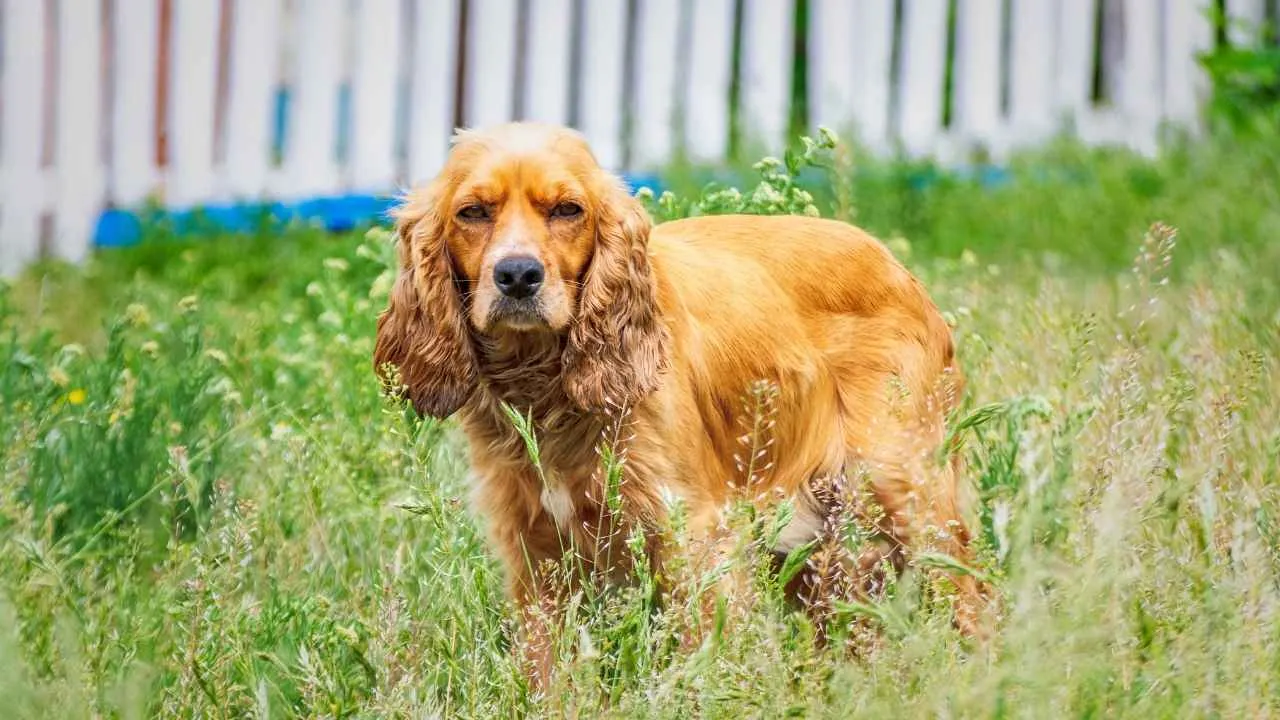
Cocker Spaniels are cheerful and intelligent dogs, eager to please their owners, which makes them easy to train. Their flat, silky coats come in various colors like black, white, tan, or brown. Known for their love of swimming and energetic nature, they are highly active dogs that thrive in environments where they can engage in physical activities.
Originally bred as gundogs, Cocker Spaniels were used by hunters to flush game birds from cover and retrieve them. The name “Cocker” refers to their work with woodcocks. They are the smallest of the hunting spaniels, with roots tracing back to the 14th century.
The breed was officially recognized in England in 1883 and by the American Kennel Club in 1878. The English and American varieties were separated by the AKC in 1946.
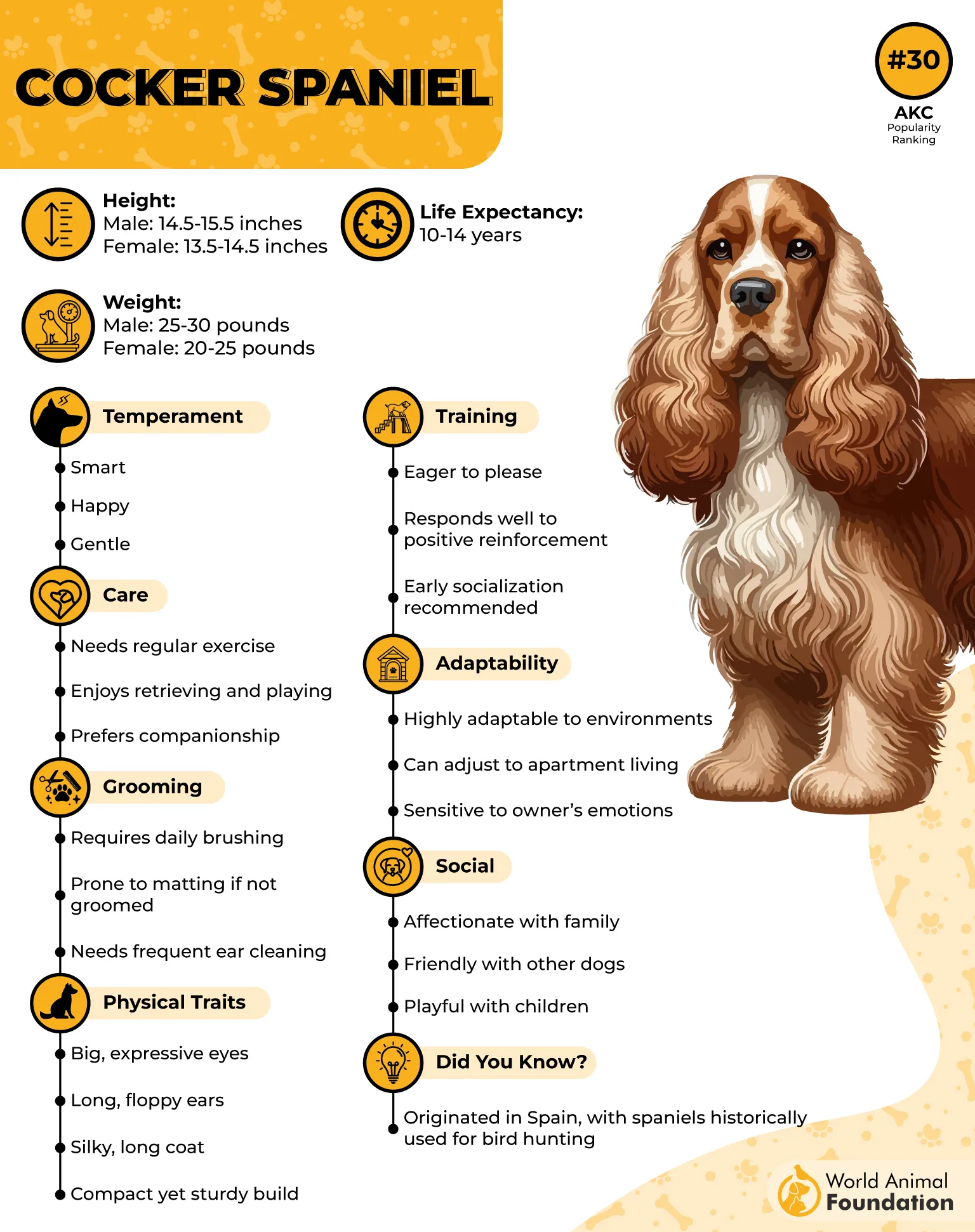
Cocker Spaniels are known for being lively, adaptable, and friendly. Their intelligent and loyal nature makes them excellent pets, even for first-time owners. They form strong bonds with their families and get along well with other people and pets, making them a sociable and affectionate breed.
Although they are energetic, Cocker Spaniels don’t require excessive exercise. They enjoy activities like retrieving toys or joining their owners on walks. If they have canine companions, they often play together, which provides them with ample exercise. Their desire to please makes them easy to motivate with play and companionship.
Their natural love for water, stemming from their gundog background, means they often get dirty and need frequent cleaning. Using appropriate dog shampoo can help manage skin allergies and keep their coat in good condition, ensuring they stay healthy and happy.
4. Golden Retriever
Golden Retrievers are renowned for their intelligence, gentleness, and hardworking nature. Originally developed in Scotland in the 19th century as a gundog and water retriever, these dogs were bred to assist hunters by retrieving game birds. Their strong and hardy build, along with their excellent swimming ability, makes them ideal for a variety of tasks.
Golden Retrievers are widely used in search and rescue operations, helping to track missing persons and items. They are also highly valued as service dogs, assisting individuals with physical and mental disabilities, thanks to their intelligence and affectionate nature. Their willingness to work and eagerness to help make them suitable for many roles.
This breed is also popular as a therapy dog, providing emotional support to people in need. Their friendly and patient demeanor allows them to connect with a wide range of individuals, making them one of the most versatile and compassionate dog breeds.
Golden Retrievers are well-known for their beautiful golden coats, which are long and thick, particularly around the neck, thighs, and tail. These dogs are excellent swimmers, which adds to their usefulness as water retrievers. They were first shown in England in 1908 and registered by the American Kennel Club in 1925.
Though friendly and gentle, Golden Retrievers are also good watchdogs, alerting their owners to strangers. However, they are not typically suited for security work, as they tend to be overly friendly once they interact with newcomers.
In the U.S., National Golden Retriever Day is celebrated on February 3rd in memory of Kirsten Shoyer’s beloved Golden Retriever, Quincey. The largest gathering for the day takes place in Golden, Colorado, a fitting tribute to the breed’s friendly and loving nature.
5. German Shepherd
German Shepherds are intelligent, loyal, and strong working dogs that originated in Germany. Developed in the late 1800s by Captain Max von Stephanitz, they were bred by crossing various herding dogs from north and central Germany to create an ideal herding breed.
German Shepherds are among the most loyal dog breeds, widely valued as excellent guard dogs. Their alertness, intelligence, and loyalty make them ideal for roles in military, police, and search-and-rescue operations. At home, they are great family dogs—fiercely protective and deeply bonded with their human families.
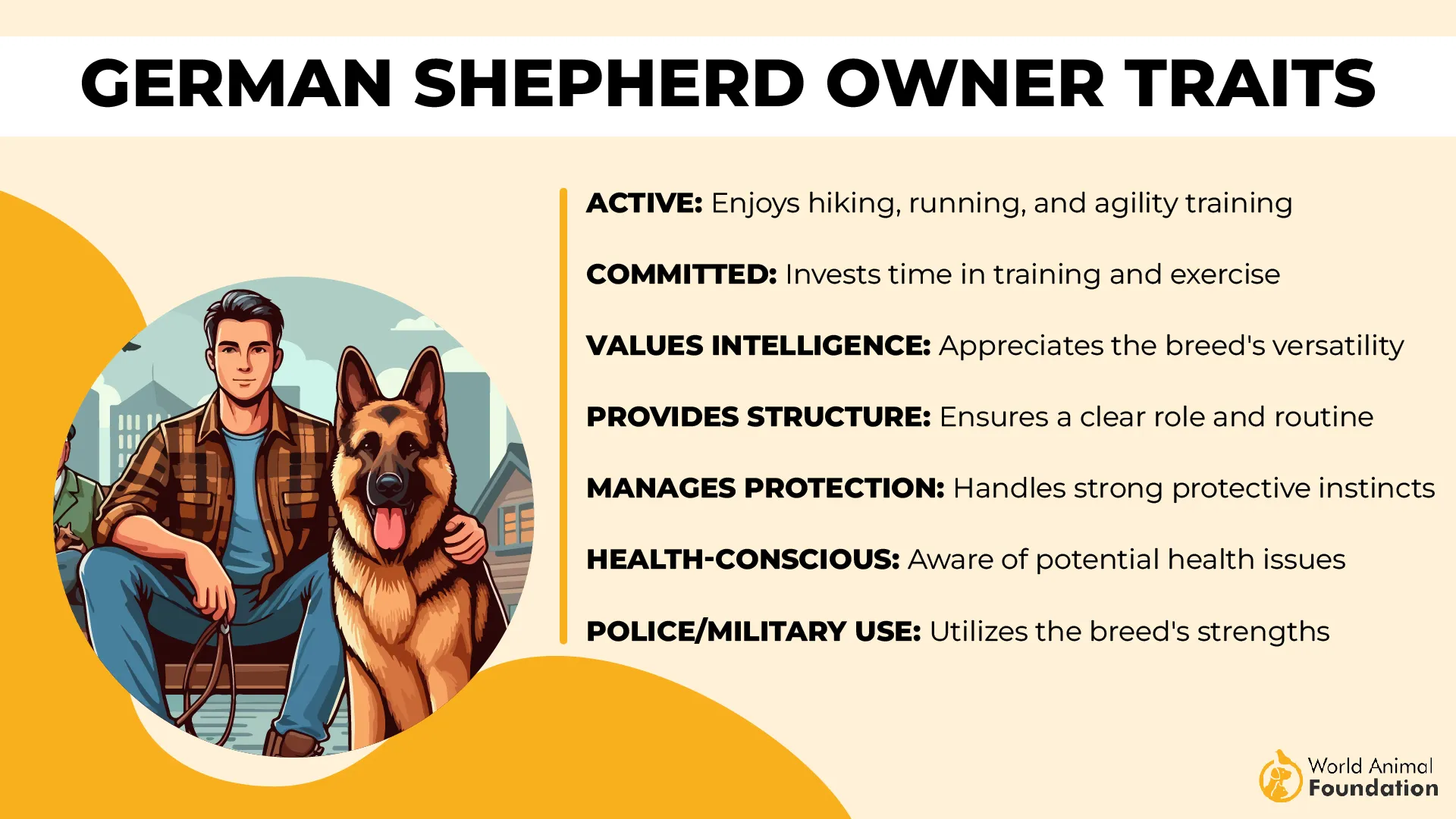
This popular breed has a dense double coat, usually black and tan or gray. With an athletic build and high energy level, they thrive in active households. Known as one of the most energetic dogs, they also enjoy swimming and outdoor play.
German Shepherds are incredibly loyal and can be wary of strangers or other animals. However, proper training and early socialization help them channel their protective instincts appropriately.
Their need for physical stimulation and mental exercise makes them best suited for families who can meet their need for an active lifestyle.
6. Pug
Pugs are known for their loyal, affectionate, and easy-going nature. While they may not be as energetic as some toy breeds, they have a dry sense of humor and a laid-back personality. Pugs generally get along well with other dogs and children, and their tendency to be low-energy makes them great companion pets.
Originating from China, Pugs date back to at least 400 B.C. and were first kept as pets in Tibetan Buddhist monasteries. They were bred specifically as lap dogs for Chinese emperors, which is why they don’t require as much exercise as other breeds. Despite their stocky build and flat faces, Pugs are not related to Bulldogs, but rather share ancestry with the Pekingese.
In 1740, the Order of the Pug, a covert Freemason society, adopted the Pug as their symbol due to the breed’s loyalty and trustworthiness. Pugs were also highly valued during the 16th century, when one saved the life of William of Orange by alerting him to an enemy attack. Napoleon’s wife, Joséphine, even used her Pug, named Fortune, to carry secret messages during her imprisonment.
Pugs are playful, affectionate, and confident without being overly assertive. While they can be stubborn, they are generally easy to train and can be moderate barkers, making them good watchdogs. However, their small size and friendly nature make them unsuitable as protection dogs.
Interestingly, a group of Pugs is called a “Grumble,” adding to their charm. Their cheerful attitude and comedic antics make them popular companions for people of all ages, and they easily adapt to various living situations. Whether it’s playing or simply relaxing with their family, Pugs are a beloved breed for their devoted nature and endearing qualities.
7. Irish Setter
The Irish Setter is a large, athletic dog known for its distinctive mahogany-colored coat, which is silky, straight, and medium in length. The coat features feathering around the chest, ears, stomach, tail, and backs of its legs. Typically standing between 25 to 27 inches tall and weighing 60 to 70 pounds, the Irish Setter is an agile and swift dog, highly regarded for its speed within the sporting dog group.
Originally known as the Irish Red Setter in the U.S., this breed was developed for its remarkable hunting, pointing, and retrieving skills. With a strong nose and hunting instincts, the Irish Setter excels as a bird dog. Its build, which includes a fine head and light bones, helps it to remain quick and agile in the field.
Irish Setters are high-energy dogs, making them ideal companions for active families. They require significant exercise, ideally over two hours a day, and do best in homes with a garden or yard. Due to their energetic nature, they are not well-suited for apartment living. These dogs thrive on running, playing, and spending time outdoors.
While they are friendly, affectionate, and playful, Irish Setters can also be mischievous and a bit stubborn. Their intelligence makes them highly trainable, though they may test their owners’ patience. Early obedience training is essential, as Irish Setters tend to stay in their puppy phase for an extended period.
Irish Setters are very welcoming and not aggressive. They get along well with children, pets, and strangers. However, their playful energy can sometimes lead to unintentional accidents, such as knocking over small toddlers while playing.
With an average lifespan of 12 to 15 years, the Irish Setter is a long-lived, fiercely loyal dog breed. They mature slowly, both physically and mentally, and will need consistent training to help guide their spirited personalities. Once trained, they are a devoted and loving addition to any family.
8. French Bulldog
The French Bulldog is a small, nonsporting breed developed in France during the late 1800s. It is a smaller version of the Bulldog with unique bat-like ears and a flat, domed skull. The breed’s short, fine coat comes in various colors, including brindle, fawn, and white. Despite its grumpy expression, the French Bulldog is known for its joyful and clownish personality, making it a popular companion dog.
Their calm nature and small size make them ideal pets for the elderly or those living in apartments. They are also good with children, although their limited tolerance for excessive heat or exercise should be noted. French Bulldogs are generally friendly toward unfamiliar dogs and people, though they are not overly exuberant in these situations.
French Bulldogs are low-energy dogs that don’t require much exercise, which is another reason they are well-suited for apartment living. However, they do suffer from separation anxiety and need a companion at home for most of the day. Their affectionate nature makes them clingy, and they thrive on attention from their owners.
Due to their short legs and muscular body structure, French Bulldogs are not natural swimmers. Their brachycephalic facial structure (flat face) makes it difficult for them to stay afloat in water. It’s important to supervise them around water and ensure they wear a lifejacket if necessary.
French Bulldogs are prone to obesity, mainly due to their laid-back nature. To prevent weight gain, owners should provide a healthy diet that includes quality protein, vegetables, vitamins, and minerals. Obesity can exacerbate conditions like hip dysplasia and increase the risk of certain health issues, including some cancers.
While French Bulldogs aren’t known to bark excessively, they are known for their wide vocal repertoire. They produce a variety of sounds, including howls, growls, yips, and gargles, making them charmingly expressive without being overly loud.
9. Saint Bernard
The Saint Bernard is a working dog known for its historical role in rescue missions, having saved hundreds of lives in the Swiss Alps. The breed is named after Saint Bernard, a Catholic archdeacon, and the mountain passes where it served as a pathfinder and rescue dog.
These dogs became famous for their work in the harsh, snowy conditions of the Pennine Alps, and their size and strength were crucial for locating and saving lost travelers.
Saint Bernards are calm, easygoing dogs with a low energy level, making them slow movers. They are affectionate and friendly, especially with family, though they may be less sociable with unfamiliar dogs.
The breed’s love for cold climates makes them more suited for snowy environments, as they have low heat tolerance and are not good companions for hiking or jogging in warmer conditions. Their gentle nature makes them a good match for families, but owners should be aware of their size when it comes to training and managing their behavior.
As noted by Britannica, Saint Bernard’s legendary rescue dog, Barry, is celebrated for saving between 45 and 100 people during his career. One of his most famous rescues involved carrying a dying boy to safety. Barry’s heroic actions led to the creation of a statue in his honor.
Later, a myth about him carrying a barrel of brandy emerged after an artist’s painting in the 1820s. The barrel was thought to have contained brandy to revive victims, but modern understanding dismisses this as impractical and potentially harmful.
These dogs are often described as gentle giants and nanny dogs. They are intelligent and eager to please, which makes training relatively easy. However, it’s essential to start training early while they are small and manageable, as they may be unaware of their size and could unintentionally knock over children or guests.
Conclusion
The best hunting and protective dogs are more than just skilled workers—they’re also extremely loyal companions. Certain breeds like the Doberman Pinscher, Australian Shepherds, Chesapeake Bay Retriever, and Border Collies combine sharp intelligence with a loyal energy level, making them ideal for both active tasks and life with human families.
Whether bred to hunt badgers, herd sheep, or stand guard against a perceived threat, these fiercely devoted dogs offer unwavering loyalty.
Their strong instincts require proper mental and physical stimulation, especially for big dogs living with young kids or older children. With the right training and environment, these loyal breeds don’t just excel in the field—they thrive as trusted members of the family, building lifelong bonds with their human friends.


